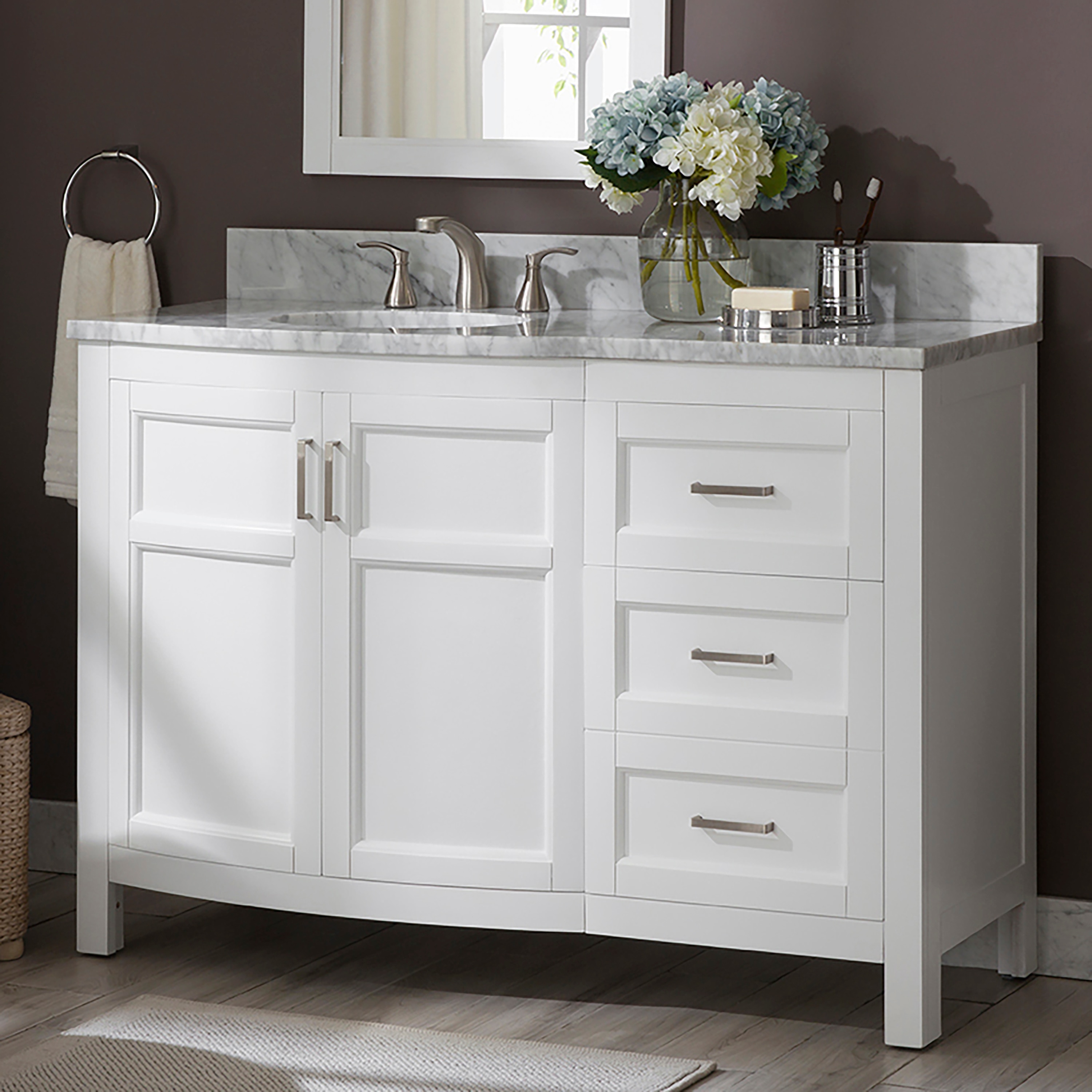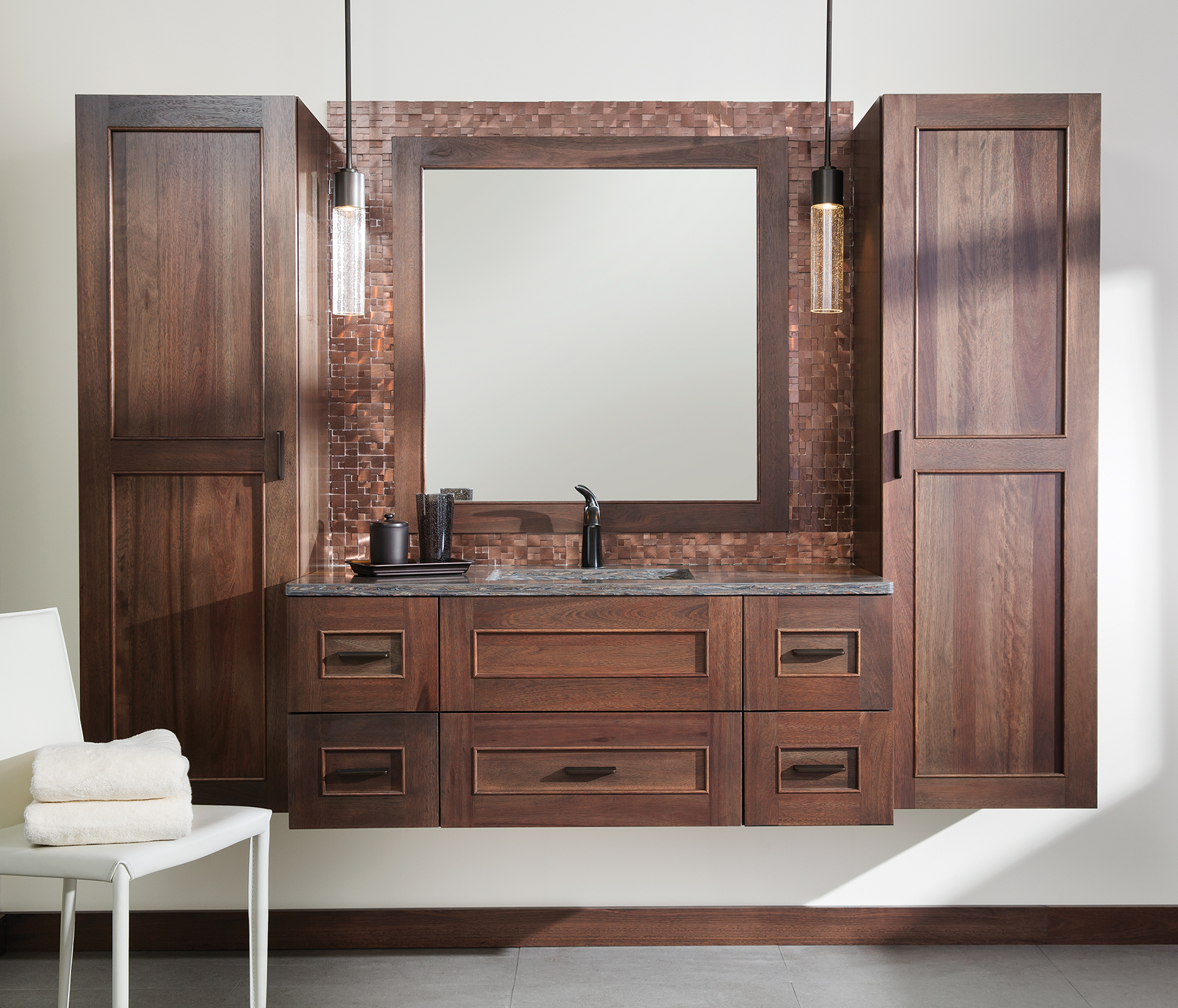Bath Vanity with Side Cabinet

A bath vanity with a side cabinet is a versatile and practical piece of furniture that enhances both the functionality and aesthetics of a bathroom. It seamlessly combines a vanity, which typically includes a sink and storage space below, with an additional cabinet that provides extra storage and organizational possibilities.
Components and Functionality
A bath vanity with a side cabinet consists of several key components that contribute to its overall functionality. These include:
- Vanity: The vanity is the central component, typically featuring a sink, countertop, and storage space below. The countertop can be made from various materials, such as granite, marble, or quartz, and often provides ample space for toiletries, decorative items, and other essentials. The storage space below can include drawers, shelves, or a combination of both, allowing for the organization of towels, toiletries, and other bathroom supplies.
- Side Cabinet: The side cabinet is an additional storage unit that is attached to the vanity. It can be placed on either the left or right side of the vanity, depending on the layout of the bathroom. Side cabinets offer extra storage space for items that may not fit in the vanity’s storage area, such as cleaning supplies, linens, or extra toiletries.
- Doors and Drawers: Both the vanity and side cabinet typically have doors and drawers that provide access to the storage space. Doors are often hinged and can be opened and closed easily, while drawers can be pulled out to access the contents. Some vanities and side cabinets may also include shelves within the drawers for further organization.
- Hardware: The hardware of a bath vanity with a side cabinet includes the knobs, pulls, hinges, and other fixtures that allow for smooth operation. Hardware can be chosen in various styles and finishes to complement the overall aesthetic of the bathroom.
Benefits of a Side Cabinet
The addition of a side cabinet to a bath vanity provides numerous benefits, including:
- Increased Storage Space: The side cabinet provides additional storage space, allowing you to keep your bathroom organized and clutter-free. This is particularly helpful in smaller bathrooms where space is limited.
- Enhanced Organization: The side cabinet can be used to store various items, such as cleaning supplies, towels, extra toiletries, or even small appliances. By dedicating specific storage areas within the side cabinet, you can keep your bathroom organized and easy to navigate.
- Improved Aesthetics: A bath vanity with a side cabinet can add a touch of elegance and sophistication to your bathroom. The side cabinet can be chosen in a style and finish that complements the overall design of the bathroom, creating a cohesive and visually appealing space.
Styles and Designs
Bath vanities with side cabinets come in a wide variety of styles and designs to suit different tastes and bathroom aesthetics. Some popular styles include:
- Traditional: Traditional vanities with side cabinets often feature intricate carvings, ornate details, and classic finishes like cherry or mahogany. They exude a sense of timelessness and elegance.
- Modern: Modern vanities with side cabinets are characterized by clean lines, minimalist designs, and sleek finishes like white or black. They create a contemporary and sophisticated look.
- Contemporary: Contemporary vanities with side cabinets often incorporate bold colors, geometric patterns, and unique materials like metal or glass. They offer a more eclectic and modern aesthetic.
- Rustic: Rustic vanities with side cabinets typically feature natural wood finishes, distressed details, and industrial hardware. They create a warm and inviting atmosphere.
Materials
Bath vanities with side cabinets can be constructed from various materials, each offering unique advantages in terms of durability, aesthetics, and cost. Common materials include:
- Wood: Wood is a popular choice for bath vanities with side cabinets due to its natural beauty, durability, and versatility. Common wood species include oak, maple, cherry, and walnut. Wood vanities can be stained or painted to match the overall decor of the bathroom.
- Laminate: Laminate is a cost-effective and durable material that is often used for bath vanities with side cabinets. It is available in a wide range of colors and patterns, making it easy to find a style that complements the bathroom decor. Laminate is also resistant to moisture and scratches, making it a practical choice for a bathroom environment.
- Acrylic: Acrylic is a synthetic material that is known for its durability, moisture resistance, and ease of cleaning. Acrylic vanities with side cabinets are often available in a variety of colors and finishes, offering a modern and sleek aesthetic.
- Metal: Metal vanities with side cabinets are becoming increasingly popular, offering a contemporary and industrial look. Metal can be used for the vanity frame, countertop, or even the side cabinet. Steel, aluminum, and copper are common metals used in bathroom vanities.
Considerations for Choosing a Bath Vanity with Side Cabinet
:max_bytes(150000):strip_icc()/double-vanity-ideas-1-erin-williamson-design-hill-country-lake-house-6857062a43964338b557315bacc7424f.jpg)
Transforming your bathroom into a haven of relaxation and style requires careful planning, especially when it comes to selecting the right vanity. A bath vanity with a side cabinet offers both functionality and aesthetic appeal, but choosing the perfect one necessitates considering several crucial factors.
Determining the Right Size
The size of your bathroom plays a pivotal role in determining the appropriate vanity dimensions. Accurate measurements are essential to ensure a comfortable fit. Consider the available space, the placement of other fixtures, and the desired movement area around the vanity. A vanity that is too large can make the bathroom feel cramped, while a vanity that is too small may not provide enough storage or counter space. It is recommended to measure the space multiple times to ensure accuracy and avoid potential miscalculations.
Installation and Maintenance of a Bath Vanity with Side Cabinet

Installing a bath vanity with a side cabinet is a rewarding project that can significantly enhance your bathroom’s functionality and aesthetics. However, it requires careful planning and execution to ensure a successful installation and long-lasting performance. This section will guide you through the installation process, providing essential tips for choosing the right tools and materials, and highlighting crucial maintenance practices to ensure your vanity remains in top condition.
Installation of a Bath Vanity with Side Cabinet
The installation of a bath vanity with a side cabinet involves several steps, starting with preparing the space and ending with the final connections. The following steps provide a detailed overview of the installation process:
- Prepare the Space: Before starting the installation, ensure the area is clear of obstacles and debris. This includes removing any existing vanities or fixtures, and clearing the floor space to accommodate the new vanity. You may need to adjust the plumbing lines or electrical outlets to match the new vanity’s configuration.
- Assemble the Vanity: Depending on the model, the vanity may arrive fully assembled or require some assembly. Carefully follow the manufacturer’s instructions for assembly, ensuring all components are securely fastened.
- Install the Sink: If the vanity comes with a pre-installed sink, ensure it is properly secured and the drain hole is aligned with the drain pipe. For separate sinks, install the sink according to the manufacturer’s instructions.
- Install the Countertop: For a countertop separate from the vanity, ensure it is properly supported and securely fastened to the vanity. Use a sealant to prevent water damage between the countertop and the vanity.
- Connect the Plumbing: Connect the vanity’s water supply lines to the existing plumbing. Ensure all connections are secure and leak-free. Connect the drain line to the existing waste pipe.
- Install the Side Cabinet: Assemble the side cabinet according to the manufacturer’s instructions. Securely attach the side cabinet to the vanity, ensuring it is level and stable.
- Install the Hardware: Install the vanity’s hardware, such as knobs, pulls, and mirrors, according to the manufacturer’s instructions.
- Final Touches: After completing the installation, test all plumbing connections for leaks. Clean the vanity and countertop thoroughly to remove any dust or debris.
Tools and Materials for Installation
Choosing the right tools and materials is crucial for a successful installation. Here are some essential items:
- Tools: Screwdriver, drill, level, tape measure, wrench, pipe wrench, plumber’s putty, sealant, safety glasses, gloves.
- Materials: Plumbing supplies (supply lines, drain pipe, fittings), screws, washers, nuts, sealant, countertop support brackets, hardware (knobs, pulls, etc.), optional: cabinet organizers, storage baskets.
Maintenance of a Bath Vanity with Side Cabinet
Regular maintenance is essential to ensure your bath vanity with side cabinet remains functional and aesthetically pleasing. Here are some key maintenance practices:
- Cleaning: Clean the vanity regularly with a mild soap and water solution. Avoid harsh chemicals or abrasive cleaners that can damage the finish.
- Preventing Water Damage: Ensure all plumbing connections are secure and leak-free. Regularly check for leaks and address them promptly. Use a sealant around the sink and countertop to prevent water damage.
- Maintaining Hardware: Clean the vanity hardware regularly to prevent tarnishing or corrosion. Use a polishing cloth or a mild cleaner specifically designed for metal finishes.
- Preventing Moisture Buildup: Ensure adequate ventilation in the bathroom to prevent moisture buildup, which can lead to mold and mildew growth. Use a fan or open a window to ventilate the room after each shower.
Tips for Extending the Lifespan of the Vanity, Bath vanity with side cabinet
Following these tips can significantly extend the lifespan of your bath vanity:
- Use a Soft Cloth: Avoid using abrasive cloths or sponges to clean the vanity, as they can scratch the finish. Use a soft cloth and a mild soap and water solution for cleaning.
- Avoid Harsh Chemicals: Harsh chemicals can damage the finish of the vanity. Use a mild soap and water solution or a cleaner specifically designed for bathroom surfaces.
- Prevent Water Damage: Regularly check for leaks and address them promptly. Use a sealant around the sink and countertop to prevent water damage.
- Maintain Hardware: Clean the vanity hardware regularly to prevent tarnishing or corrosion. Use a polishing cloth or a mild cleaner specifically designed for metal finishes.
- Proper Ventilation: Ensure adequate ventilation in the bathroom to prevent moisture buildup, which can lead to mold and mildew growth. Use a fan or open a window to ventilate the room after each shower.
Bath vanity with side cabinet – A bath vanity with a side cabinet offers both style and functionality, providing ample storage for toiletries and bathroom essentials. If you’re looking for a similar DIY project, consider building your own pantry cabinet using unfinished cabinets from unfinished pantry cabinet menards.
Just like a bathroom vanity, a well-designed pantry cabinet can enhance your kitchen’s organization and efficiency.
A bath vanity with a side cabinet offers a stylish and practical solution for maximizing storage space in your bathroom. If you’re seeking a brand known for quality and design, consider exploring the options from hudson reed bathroom cabinet.
Their range of cabinets often complements the aesthetic of a bath vanity with side cabinet, providing a cohesive and functional look for your bathroom space.
